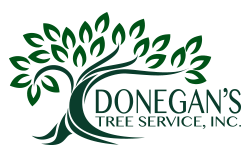Grasscycle Grass Clippings—Beneficial for Your Lawn and Trees
We have fast approached the mowing season in the Loudoun area. This year we are facing the same thing as we faced all the other years…what do we do with our grass clippings?
Historically, we were made to believe that we need to bag our clippings and toss them out, but there is a very popular movement that has taken root called “grasscycling.” Yes, grasscycling is a real word! At least it’s real enough that you can Google it to find the meaning or look it up in Wikipedia.
The word “grasscycling” was created in the 1990s, but not too many people practice it or know what it is. Wikipedia defines it as, “a method of handling grass clippings by leaving them to decompose on the lawn when mowing.”(1) Yep, it’s really that simple. Just let your mower do its thing and spread all those clippings around your yard and you are done.
Grasscycling is beneficial in so many ways. The most important would be that since the clippings remain on your lawn, they break down and release their nutrients back into the soil, which means less fertilizing for you and less run-off pollutants in our waterways. The grass clippings on the lawn also help to control moisture. Also, since you are not bagging the clippings and tossing them out, it frees up a lot of room in our landfills. And it takes less time to mow your lawn if you practice grasscycling.
If you are going to give grasscycling a try, you should keep a few things in mind. For starters, don’t set your blades down too low. This is just not a good thing to do in general. You should keep your mower blades around 4 inches. The EPA says that keeping your grass between 2.5 – 4 inches long can help reduce weeds by 50 - 80%! (2)
You can also buy a mulcher mower to help mulch the grass blades better. If you have a lawn care service that mows for you, ask them about grasscycling and see if this is something they can do for you. Regardless of how you approach it, grasscycling is something you should look into as an overall benefit to your lawn’s health.
References:
(1) https://en.wikipedia.org/wiki/Grasscycling
(2) https://www.epa.gov/safepestcontrol/healthy-lawn-healthy-environment-caring-your-lawn-environmentally-friendly-way

